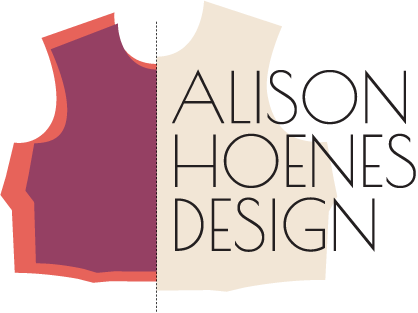I know that for many of you creative designers, things involving numbers are far from the top of your list of fun things to work on. Researching trends, sketching ideas, and creating a beautiful line plan is more invigorating and can feel more creatively fulfilling. However, if you’re designing for a business and not just for yourself, the numbers are important. It is true you can delegate much of the number stuff to an accountant, technical designer, or production coordinator, but there are some numbers that you as the designer really need to know and understand yourself.
Cost of Goods
Understanding costing is essential for making sure your garment design is a financial success for your business. As you are designing, you’ll want to keep in mind how your design choices affect the overall cost of goods. There isn’t a set formula for what percentage of the total cost each part should be (fabric, trims/hardware, cut & sew, shipping, labels/packaging, development, etc.), but if you spend more in one area, you’ll have to be more conscious of costs in another.
You may also be working backwards from a costing budget. If you know that you need to keep your cost under a certain mark to make it doable for your business, you can make your design decisions accordingly.
Target Retail Price
Like with costing, knowing the target retail price for a style you are designing will help you create the best product. Customers have certain quality expectations (consciously or unconsciously) about garments at different price points. It is your job as the designer to meet and hopefully exceed those expectations and design a quality garment your customers will value at that price point.
Understanding your target retail price points will help you if you do any competitive analysis as well. You’ll be able to focus your research on similar garments in the same price point from other brands and see how your design compares and what your design offers that is different.
MOQs
Minimum order quantity (known as MOQ) is another number that is important to understand as a designer. MOQs can come into play in design in several ways. You’ll need to consider fabric MOQs when designing your line. Sometimes the MOQ can be quite high, in which case you can split that fabric between several styles in your line to meet the minimum. This financial decision turns into a design decision.
You will probably have production MOQs as well. These are often per style or even per colorway/style. If you know what these minimums are, you will be able to make informed decisions about how many styles and colorways you want to include in your line and even how timeless versus trendy you want your design details to be.
Spec Sheets
It is totally okay if you don’t understand how patternmaking and size grading works as the designer, but you do need to know how to read a spec sheet. A spec sheet has a list of different points of measure for a garment and what that measurement should be for each size in your size range. These measurements are accompanied by a tolerance that controls how much a measurement can vary up and down and still be considered an acceptable garment. Spec sheets will help you quality control your samples and production as well as help create your brand’s size chart.
Sales Data
Sales data numbers are a huge resource to designers. For brands that have just launched their first collection, you won’t have this data quite yet, so customer research is where you’d turn instead. For brands that have sales history, though, looking at the sales data offers insight into what silhouettes, fabrics, or details are your best-sellers and what styles are most profitable for you. You can use this information to guide your next collection. Take what sold well last time and update it to make it new, while still keeping the core the same. This will create consistency in your line and help you focus on the designs that are best for your bottom line.
Staring at a spreadsheet of numbers can be overwhelming, so I’ve found that printing out little thumbnails of each style and arranging them on a table or peg board in order of best-selling is a great way to visualize the data. I mark each thumbnail with the actual sales number from the report, too, so I can see both. Your design eye will start to see the patterns of what all the best-sellers have in common or what common thread made certain styles less successful.
While numbers aren’t always a designer’s best friend, there are numbers that should be among your inner circle. Cost of goods, target retail price, MOQs, spec sheets, and sales data are all key numbers that, with the proper understanding, can inform your designs and help you create a better fashion business.
